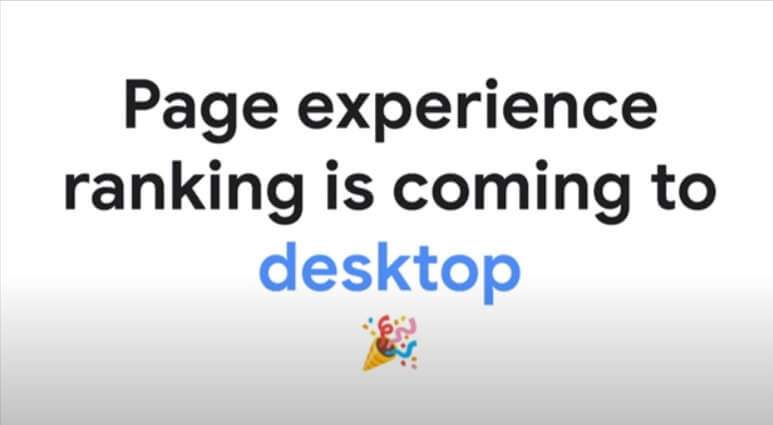Google has planned to roll out its Page Experience update that will soon be live on Google Search. This will be applicable to the desktop and mobile search results. The page experience update was announced last year in November and as said by the mid of June 2021, the page experience ranking will hit the mobile search results and then the desktop results.
Speaking of page experience updates, let us know what matters the most for Google?
User experience has been a priority to Google so they used it as a factor for ranking. The user interface over a page matters more. Google has been making efforts to provide its users with mobile-friendly pages and security of user information. These two have been always a priority to Google.
So now we know that Google gives priority to page experience, let us dig deeper in finding what are the factors in page experience that decide the ranking of a website.
Factors in page experience that rank a website in Google search
There are four factors in the page experience that decide the rank of a website and they are,
- Loading Speed
- User Annoyance
- Security and privacy
- Accessibility
Loading Speed of the Webpage
Loading speed shows how quickly your page loads in fetching the content and displaying it on the user’s screen. This also detects if your page speed is slow and the time taken for the content to be downloaded on the user’s browser.
Google uses the Largest Contentful Paint and First Input Delay for loading a page in the Google search.
Largest Contentful Paint
LCP is the short form of Largest Contentful paint which is a metric used to report the render time that takes in between loading the largest image and the time when the page started to load.
First Input Delay
First Input Delay also called as FID calculates the time from when the user first clicks on to the page and the time taken for the page to start providing a response to the interaction made.
User Annoyance
Cumulative Layout Shift (CLS)
Google uses Cumulative Layout Shift (CLS) to measure the individual layouts shift score. This will also count each and every unexpected layout shift that appears on the page. This process can happen at any time when there are changes from one rendered frame to another.
No abusive interstitials
No abusive interstitials is one of the search ranking policies that detect the usage of interstitials that may appear to be genuine. These types of interstitials are mostly harmful to the users making them do things they don’t want to do. With the No abusive interstitials, Google prevents its users from reaching those kinds of pages.
Security and Privacy matters more
Google takes many measures in finding the security of the website. They use the HTTP protocol to make sure the sites are safe and secure for the users. This will help users gain trust in what they browse over Google search.
The safe browsing system in Google has been built brick by brick with a strong foundation in identifying and removing web-based threats that include malware, unwanted software downloads, etc.
Have you ever come across a warning sign saying that the content that you are about to download may be harmful to your device?
The warning message that you receive comes from Google’s safe browsing system and will help you identify between safe sites and malware.
Accessibility of a site in the Google search
The mobile-friendliness of a webpage in the Google search matters more. Assume you are browsing on a mobile device and the site you have reached is in a desktop version. Users who wanted to read the resources on the page will lose interest and will abandon the site.
So now we know the factors that decide the page experience ranking of a site in the Google search. In these above said signals the Largest Contentful Paint, First Input Delay and Cumulative Layout Shift are the Core Web Vitals of a page.
The Core Web Vitals uses Java script with standard web API to measure the signals to a page and also will create a path for the users to get hold of the content.
The Core Web Vitals will are good at ranking a website between good, poor and somewhere in between.
“For instance; LCP where we measure the loading performance of the page, values less than 2.5 seconds means the page is delivering good user experience. Pages that take more than four seconds are deemed poor. Similarly for the First Input Delay, 100 milliseconds is a maximum delay users have to encounter during the initial input and its responses. Anything greater than 300 milliseconds starts to feel like the page is frozen and lead to a bad user experience. Cumulative Layout Shift is a unit-less metrics. 0.1 score or below is good while 0.25 or greater is deemed poor.” – Jeffrey Jose, Product Manager, Google Search.
Google has also informed that when the page experience ranking is rolled out they will be using the updated definition of the Cumulative Layout Shift. The updated definition is to be more accurate in measuring the maximum duration taken for the window within 5 seconds.
Top Stories in Google Search
Google will be updating the top stories feature along with page experience ranking.
Google will be expanding the eligibility criteria for the qualified web pages even though they possess a good Core Web Vitals score or even page experience status unless they fulfil the Google News content policies.
Google also announced that they will be bringing in the page experience ranking for mobile by the mid of June and will be introducing it on desktop as well.
Updated guidance, documentation and tools will be provided for the users to qualify their site with a better page experience on the desktop as well.
Prefetching on Google Search
Page owners can use prefetching in Google search to get better page performance for their users. This can be built using signal exchanges. Pages are preloaded when the user types in something in the Google search box. This will help pages reduce the load time taken.
Search Performance Report
Search performance report helps site owners improve their page experience. This will also provide a number of valuable metrics that allow the site owners to evaluate the performance of their site.
The search performance report has been updated in a way that the users can filter out the pages that have a good page experience.
Coming to an end, with the page experience updates Google has planned to provide an exceptional user experience for its users.













